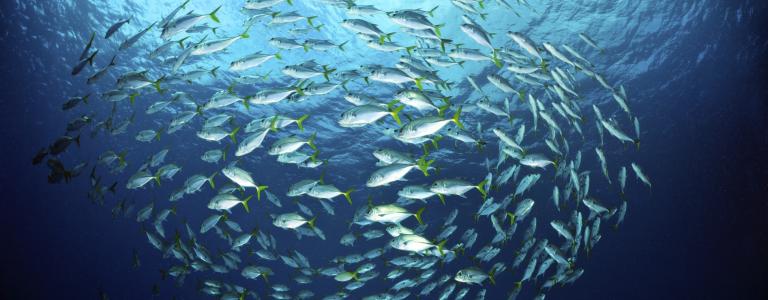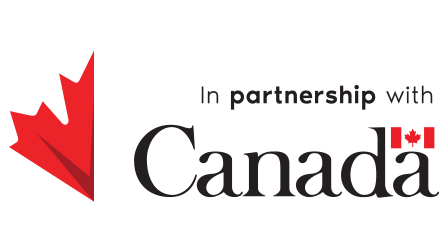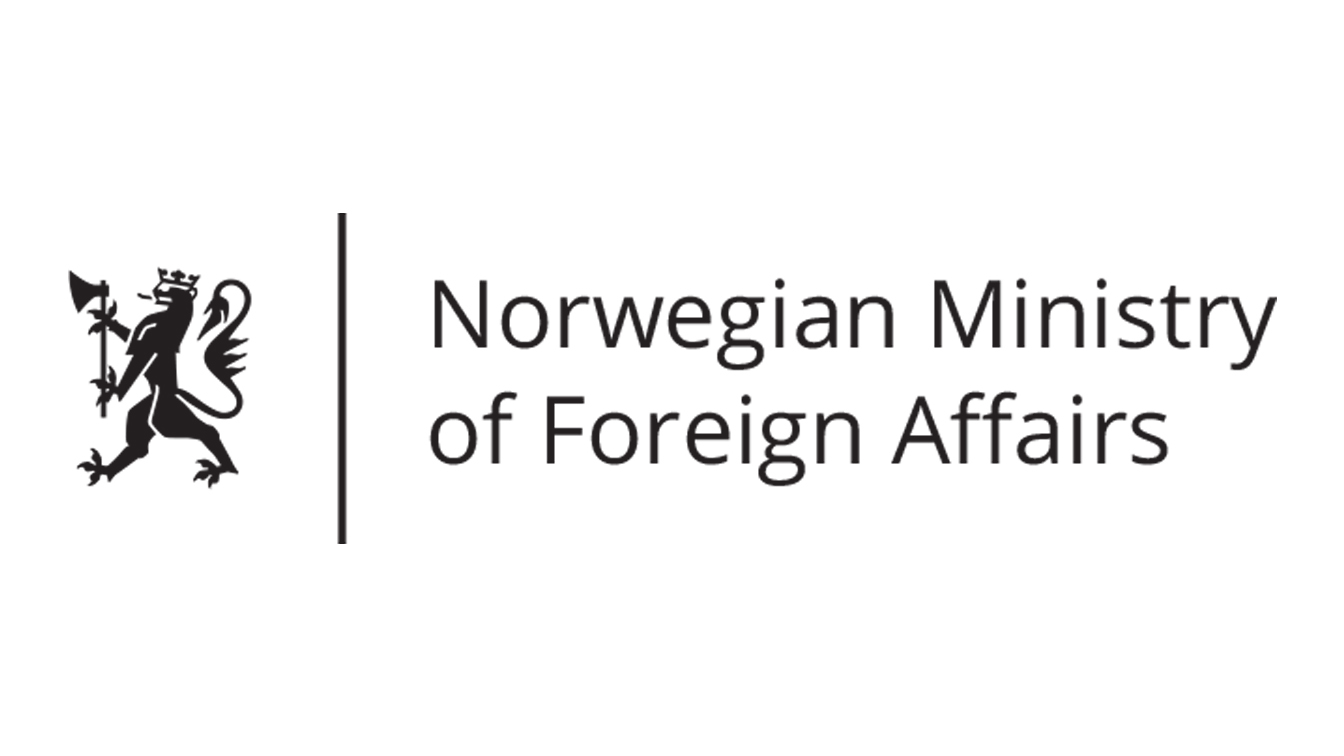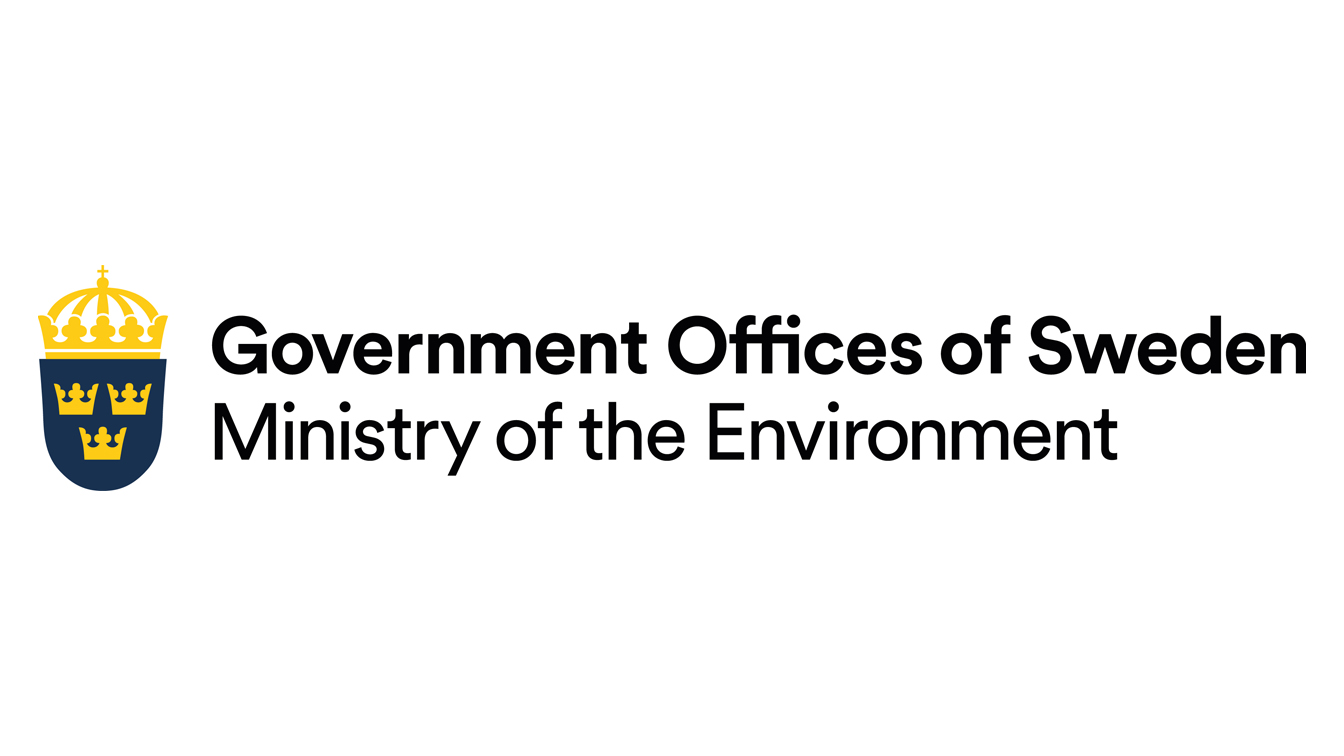The "Crown Jewels" of Environmental Diplomacy: Assessing the UNEP Regional Seas Programme
Still Only One Earth: Lessons from 50 years of UN sustainable development policy
The Regional Seas Conventions and Action Plans have achieved significant impacts, including pollution prevention and coastal zone management. They’re an excellent testament for the strategy of segmenting environment action by region. At the same time, implementation varies due to lack of political will, political instability in some states, lack of funding, and/or weak enforcement mechanisms. (Download PDF) (See all policy briefs) (Subscribe to ENB)
In 1971, ocean explorer Jacques Cousteau issued a stark warning in a New York Times opinion piece, Our Oceans Are Dying. Between 30 and 50% of the oceans had been damaged by human activity since the early 1950s, he wrote, acknowledging the perception that the “legendary immensity of the ocean was such that man could do nothing against such a gigantic force.” He worried humans viewed the ocean as an infinitely vast resource instead of a delicate ecosystem that pollution and overfishing could overwhelm (Gilmore, 2018). He lamented the disappearing coral reefs and continuing degradation of the marine and coastal environment from the Indian Ocean to the Red Sea to the Mediterranean. Just a year later, in 1972, world leaders met in Stockholm, Sweden, for the UN Conference on the Human Environment and planted the seeds of a regional approach to ocean governance.
While some ocean-related problems are better addressed through international treaties, solutions to marine and coastal issues vary greatly and are often best addressed at the regional level. These include land-based sources of marine pollution and coastal degradation, as well as unsustainable fishing practices. For almost 50 years, regionalization of ocean governance has been exemplified in the UN Environment Programme’s (UNEP) Regional Seas Programme, which addresses marine pollution and degradation of oceans and coastal areas among countries sharing common bodies of water. The Programme’s history demonstrates the value of a regional approach to environmental action.
History of the Regionalization of Ocean Governance
In his opening speech to the 1972 Stockholm Conference, Secretary-General Maurice Strong acknowledged a “frightening rate” of deterioration of many enclosed seas. While emphasizing the need for global environmental action, he noted an “equally compelling” case for regional cooperation. This was subsequently articulated in the Stockholm Action Plan, which recommended governments take early action to adopt effective measures to control all significant sources of marine pollution and coordinate their actions regionally and, where appropriate, internationally.
The oceans present a compelling and urgent case for global environmental action. The case for regional cooperation is equally compelling, for a large number of effectively enclosed seas, such as the Mediterranean, the Baltic and the Caspian, are deteriorating at a frightening rate.
The Stockholm Conference also gave birth to UNEP. UNEP’s Governing Council immediately designated oceans as one of the new organization’s priority programmes (Decision 1(I)) and led to the development of the Regional Seas Programme. In 1974, UNEP’s Governing Council called for preparation of regional agreements or conventions on protecting specific bodies of water from pollution, particularly from land-based sources (UNEP, 1974, p.63).
Mostafa Tolba, UNEP’s Executive Director from 1975-1992, described challenges faced in launching the first agreement for the Mediterranean Sea in the mid-1970s. A “miniature ocean bordered by 120 cities,” by the early 1970s, the Mediterranean was so heavily polluted many feared it might die (Tolba, 1998, p.38). Tolba questioned whether countries in the region would enter into an environmental agreement when Arab countries were at war with Israel, Turkey and Greece disputed control of Cyprus, and Algeria and Morocco clashed over the Western Sahara. Contrary to expectations, countries agreed on a plan to slow and ultimately reverse threats to the sea, with Tolba (1998, p.42) commenting that this achievement in the Mediterranean “had significance beyond its shores.” He credited the fact that participating countries enhanced their understanding of the environment’s role in development and could set aside their political differences to help save their shared environment (Tolba, 1998, p.44).
Once a symbol of the seas’ benefits to man, [the Mediterranean] became a symbol of man’s destructive impact on the seas.
The Mediterranean Action Plan set the stage for the adoption of similar agreements around the world. The Regional Seas Programme thus became one of UNEP’s most significant achievements, sometimes described as the crown jewels of environmental diplomacy (Hulm, 1983), and is an integral part of ocean governance. It constitutes a unique approach to protecting the coastal and marine environment through a “shared seas” approach, by engaging neighbouring countries in actions to protect their common marine environment and shared bodies of water. Currently, more than 146 countries participate in 18 Regional Seas Conventions and Action Plans. UNEP administers seven in the Caribbean, Caspian Sea, East Asian Seas, East Africa, Mediterranean, Northwest Pacific, and West Africa. Seven more were created under the auspices of UNEP, and while they still cooperate and coordinate with UNEP, they are independently run: Black Sea, ROPME Sea Area (Protection and Development of the Marine Environment and the Coastal Areas of Bahrain, Iran, Iraq, Kuwait, Oman, Qatar, Saudi Arabia, and the United Arab Emirates), Northeast Pacific, Pacific, South Asia, Southeast Pacific, and Red Sea and Gulf of Aden. The Arctic, Antarctic, Baltic Sea, and Northeast Atlantic regions have independently established and administered programmes.

The Regional Seas approach contains several common elements. Each begins with the development of an action plan, which outlines a strategy of regionally coordinated actions to protect the shared body of water. The action plans are based on the region’s unique environmental concerns and challenges, the socioeconomic and political situation, and priorities, needs and capacities of participating countries. The action plans cover issues that differ from region to region—from chemical waste and pollution and coastal development, to oil spill preparedness and response, and the conservation of marine species and ecosystems. Their structure often follows the framework set out in the Stockholm Action Plan: environmental assessment (including evaluation and review); research, monitoring, and information exchange; environmental management; and supporting measures, such as education and training, public information, technical cooperation, and financing.
The action plans have expanded from primarily addressing marine pollution to including biodiversity conservation, particularly through marine protected areas (MPAs), and, more recently, sustainable development. The Mediterranean Action Plan, for example, initially helped countries control marine pollution, develop national environment policies, improve capacity, and ensure effective resource allocation. It then gradually transitioned toward a more holistic approach, acknowledging the inextricable link between environmental protection and social and economic development, for example, through integrated coastal zone management (ICZM), which conserves biodiversity while developing coastal economies.
In 14 of the 18 regions, action plans are further supported by a legal framework in the form of regional conventions that cover general obligations. Some include protocols that prescribe more specific measures, procedures, and standards.
Accomplishments of the Regional Seas Programme
The Regional Seas Conventions and Action Plans have achieved some significant accomplishments since their inception.
In the Mediterranean, parties to the Barcelona Convention for the Protection of the Marine Environment and the Coastal Region of the Mediterranean adopted the 2016–2025 Mediterranean Strategy for Sustainable Development, which focuses on environmental sustainability to achieve economic and social development, in line with the Sustainable Development Goals (SDGs) (Leone, 2017). In 2008, Barcelona Convention parties adopted the first ICZM protocol in a Regional Seas framework. In addition, parties adopted a legally binding Regional Plan for Marine Litter Management in the Mediterranean in 2013, through the Global Partnership on Marine Litter (GPML). Nineteen Mediterranean countries have established national action plans or measures addressing marine litter, and 17 have adopted measures for reducing use of or banning single-use plastic bags. Eight countries have recycling legislation and policies. Some have undertaken efforts to minimize the use of plastic PET bottles and microbeads in personal care products. More than 20 Adopt-a-Beach and Fishing-for-Litter pilot projects have been implemented since 2016 (UN, 2020).
In the Wider Caribbean, some of the programme’s achievements include: an Action Plan for the Conservation of Marine Mammals; development of a Caribbean Regional Node for Marine Litter Management to implement the Caribbean Clean Seas Campaign on Marine Litter and Plastics; and a Caribbean Island Oil Pollution Response and Cooperation Plan. The Protocol on Specially Protected Areas and Wildlife (SPAW Protocol) aims to protect, preserve, and sustainably manage zones with particular ecological value, and threatened or endangered wild species and their habitats. Over 50,000 square kilometres of MPAs have been designated since 2010, and 35 MPAs are listed under the SPAW Protocol (Inniss, 2017).
In West and Central Africa, parties to the Convention for Cooperation in the Protection, Management and Development of the Marine and Coastal Environment of the Atlantic Coast of the West and Central Africa Region (Abidjan Convention) have adopted six protocols on: ICZM; sustainable mangrove management (Calabar Protocol); environmental norms and standards for offshore oil and gas exploration and exploitation; protection and development of the marine and coastal environment from land-based sources; and combating pollution in cases of emergency. The region has the largest mangrove in Africa and the third largest in the world, namely the Calabar mangrove in Nigeria. The West Africa Biodiversity and Climate Change (WA BiCC) programme helps to implement the Calabar Protocol through, for example, site-based activities in the Sierra Leone Coastal Landscape complex. Activities include ecological restoration with an emphasis on mangrove ecosystems. Planning and implementation of activities are also underway in Côte d’Ivoire’s Fresco Coastal Landscape to encourage the signing, ratification, domestication, and a wider application of the Protocol (WA BiCC, 2019).
In Eastern Africa, parties to the Convention on the Protection, Management and Development of the Marine and Coastal Environment of the Eastern Africa Region (Nairobi Convention) have adopted protocols on protection from land-based pollution sources and activities, protected areas and wild fauna and flora, and combating marine pollution in cases of emergency. The next meeting of Conference of the Parties is expected to adopt an ICZM protocol. Some accomplishments include a 2016 partnership on a transboundary protected area between Kenya and Tanzania, and support to the Northern Mozambique Channel for integrated ocean management.
In the East Asian Seas region, the Coordinating Body on the Seas of East Asia (COBSEA)’s Regional Action Plan on Marine Litter was revised in 2019. Accordingly, COBSEA and UNEP launched a project, “Reducing marine litter by addressing the management of the plastic value chain in Southeast Asia,” with a USD 6.5 million grant from the Swedish International Development Agency. The project aims to reduce marine litter from land-based sources, identify and scale up market-based solutions and regulatory and fiscal incentives, strengthen the science basis for decision making, and increase public awareness.
In the Caspian Sea, the Framework Convention for the Protection of the Marine Environment of the Caspian Sea (Tehran Convention) has protocols on regional preparedness, response and cooperation in combating oil pollution incidents, pollution from land-based sources and activities, biodiversity conservation, and transboundary environment impact assessment. Parties are in the process of developing a protocol on monitoring, assessment and information exchange, and a marine litter project is underway.
In the Northwest Pacific, the Action Plan for the Protection, Management and Development of the Marine and Coastal Environment of the Northwest Pacific Region (NOWPAP) includes the Marine Environmental Emergency Preparedness and Response Regional Activity Centre, which coordinates preparedness and response to oil and hazardous and noxious substances spills.

Recently, some regional seas frameworks have extended their activities into areas beyond national jurisdiction (ABNJ), particularly using area-based management tools, reflecting the connections between waters under national jurisdiction and ABNJ. These include: the Convention for the Protection of the Marine Environment of the North-East Atlantic (OSPAR); the Convention on the Conservation of Antarctic Marine Living Resources (CCAMLR); the Barcelona Convention; the Convention for the Protection of the Natural Resources and Environment of the South Pacific Region (Noumea Convention); and the Convention for the Protection of the Marine Environment and Coastal Area of the South-East Pacific (Lima Convention). The Abidjan and Nairobi Conventions have recently begun to examine marine biodiversity in ABNJ (UNEP, 2017b; UNEP, 2018).
Regional Seas Conventions and Action Plans
| Region | Convention | Year Adopted | Year Entered Into Force | Number of States |
|---|---|---|---|---|
| Mediterranean | Barcelona | 1976/1995 | 1978/2004 | 22 |
| Western and Central Africa | Abidjan | 1981 | 1984 | 22 |
| Wider Caribbean | Cartagena | 1983 | 1986 | 28 |
| Eastern Africa | Nairobi | 1985 | 1996 | 10 |
| East Asia Seas | None | 1984 (Revised 1993) | Action plan in force | 9 |
| North-West Pacific | None | 1994 | Action plan in force | 4 |
| Caspian Seas | Tehran | 2003 | 2006 | 5 |
| Region | Convention | Year Adopted | Year Entered Into Force | Number of States |
|---|---|---|---|---|
| Regional Organization for the Protection of the Marine Environment (ROPME) | Kuwait | 1978 | 1979 | 8 |
| South-East Pacific | Lima | 1981 | 1986 | 4 |
| Red Sea and Gulf of Aden | Jeddah | 1982 | 1985 | 8 |
| Pacific | Noumea | 1986 | 1990 | 19 |
| Black Sea | Bucharest | 1992 | 1994 | 6 |
| South Asian Seas | None | 1995 | Action plan in force | 5 |
| North-East Pacific | Antigua | 2002 | 2010 | 8 |
| Region | Convention | Year Adopted | Year Entered Into Force | Number of States |
|---|---|---|---|---|
| Baltic Sea | Helsinki | 1974/1992 | 1980/2000 | 10 |
| North East Atlantic | Oslo-Paris (OSPAR) | 1974/78/92 | 1998 | 16 |
| Antarctic | Antarctic Treaty/Commission for the Conservation of Antarctic Living Resources | 1959/1980 | 1961/1982 | 32 |
| Arctic | Arctic Council Protection of the Arctic Marine Environment Working Group | 8 |
Challenges to Effective Implementation
Despite these efforts, the ocean is still in trouble. Land-based sources of marine pollution and overfishing—often due to overcapacity and government subsidies—are among the most serious challenges. Estimated at USD 35.4 billion per year worldwide in 2018, government fishing subsidies make fuel cheaper, support shipbuilding, or help fleets purchase larger or more effective nets and other supplies, all of which contribute to overfishing. In fact, the Food and Agriculture Organization of the UN estimates 90% of the world’s marine fish stocks are fully exploited, overexploited, or depleted.
While Regional Seas Conventions and Action Plans have gained widespread acceptance and participation, implementation varies from region to region due to, for example, lack of political will, political instability in some states, lack of funding, or weak enforcement mechanisms (Rochette, 2013). While many generate valuable scientific data and assessments and contribute to capacity building, the primary challenge is to ensure these findings are fed into governance mechanisms so regional threats to the marine environment and its biodiversity are addressed (UNEP, 2016a).
These challenges can be addressed in several ways. First, inter-regional cooperation has led to improved implementation. Since 2004, annual global meetings of Regional Seas Conventions and Action Plans have provided the opportunity to share experiences. These meetings set common visions through the development of Regional Seas Strategic Directions (RSSDs) to connect regional activities with global processes and improve efficiency through cooperation among regions. Sharing best practices among the regions is also useful. For example, the Barcelona Convention was able to share its experiences developing an ICZM Protocol during a meeting convened by the Nairobi Convention on coastal zone management.
Greater cooperation with other international organizations can also help tackle some of these long-term challenges. Cooperation with regional fisheries management organizations can address overfishing. Cooperation with other multilateral environmental agreements, including the Convention on the Prevention of Marine Pollution by Dumping of Wastes and Other Matter (London Convention), Convention on the Prevention of Marine Pollution by Dumping of Wastes and Other Matter (MARPOL), and the Basel Convention, can help combat marine pollution. Cooperation with the biodiversity conventions (Convention on Biological Diversity, Convention on the International Trade in Endangered Species of Wild Fauna and Flora, Convention on Migratory Species, World Heritage Convention, and Ramsar Convention) can improve marine and coastal habitat conservation.
The Ocean’s resistance and resilience are not infinite, and we cannot expect it to endlessly absorb the effects of unsustainable human activities.
Greater stakeholder ownership is also important. Involvement of local governments and communities in regional seas protection can ensure more effective resource management and pollution prevention. Additional financing can come from international, national, and private sector sources. At the national level, this could include fees for water pollution, watershed protection, and coastal zone construction, and user fees (Ehler, 2006, p. 81). At the international level, Global Environment Facility funding can be supplemented by partnerships with other international organizations, including the FAO, the United Nations Development Programme, and the World Bank. Finally, public-private partnerships should be included in the funding mix. The private sector has a civic responsibility to contribute to the well-being of the regions from which they derive a large share of their business and profits (Ehler, 2006, p. 82).

Working with the 2030 Agenda
Both funding and stakeholder participation are tied in with the 2030 Agenda for Sustainable Development and its SDGs, especially SDG 14 on conserving and sustainably using the oceans, seas, and marine resources for sustainable development. The fourth RSSD (2017-2020) aimed to:
- reduce marine pollution in line with SDG target 14.1 (preventing and reducing marine pollution, particularly from land-based activities);
- increase resilience in line with SDG 13 (climate action) and the Paris Agreement on climate change through mainstreaming climate action into regional and national policies, assessing climate impacts to propose adaptation strategies, supporting climate research, and facilitating access to climate finance;
- develop integrated, ecosystem-based regional ocean policies and strategies for the sustainable use of marine and coastal resources; and
- enhance the effectiveness of Regional Seas Conventions and Action Plans to support integrated ocean policies and management.
The Regional Seas Programme is also helping countries monitor and report on implementation of SDG 14, building on its decades of data, reports, and assessments. For example, the Programme is developing indicators to assess the state of the marine environment, enabling governments and citizens to assess progress.
No one country can effectively address issues facing oceans today. But one thing is sure: Cooperation is imperative at all levels. The ocean is amorphous, constantly flowing, and knows no borders. “The sea, the great unifier, is man’s only hope. Now, as never before, the old phrase has a literal meaning: We are all in the same boat.” Jacques Cousteau’s words have never rung truer.
Works Consulted
Bliss-Guest, P., & Keckes, S. (1982). The Regional Seas Programme of UNEP. Environmental Conservation, 9(1), 43-49. https://core.ac.uk/download/pdf/85219524.pdf
Cousteau, J. (1971). Our oceans are dying. New York Times. https://www.nytimes.com/1971/11/14/archives/our-oceans-are-dying.html
Ehler, C. (2006). A global strategic review: Regional Seas Programme. UNEP.
Hulm, P. (1983). The Regional Seas Program: What fate for UNEP’s crown jewels? Ambio 12(1), 2-13. http://www.maximedia.org/publications/jewels.htm
Gilmore, N. (2018). The early environmentalism of Jacques Cousteau. Saturday Evening Post. https://www.saturdayeveningpost.com/2018/01/early-environmentalism-jacques-cousteau/
Inniss, L. (2017). Success story: Caribbean. UNEP. https://www.unenvironment.org/ru/node/20849
Johnson, S. (2012). UNEP: The First 40 Years. UNEP.
Keckes, S. (1994). The Regional Seas Programme - integrating environment and development: The next phase. In P. B. Payoyo (Ed.), Ocean governance: Sustainable development of the seas. UN University Press.
Leone, G. (2017). Success story: Mediterranean. UNEP. https://www.unenvironment.org/news-and-stories/speech/success-story-mediterranean
Mrema, E.M. (2016). Regional Seas Programme: The role played by UNEP in its development and governance. https://lawexplores.com/regional-seas-programme-the-role-played-by-unep-in-its-development-and-governance-elizabeth-maruma-mrema/
Rochette, J., & Chabason, L. (2011). A regional approach to marine environmental protection: The “Regional Seas” experience. Oceans—The New Frontier. http://regardssurlaterre.com/en/regional-approachto-marine-environmental-protection-regional-seas-experience
Rochette, J., & Billé, R. (2013). Bridging the gap between legal and institutional developments within regional seas frameworks. International Journal of Marine and Coastal Law, 18(3), 433-463.
Sandford, R. (1994). International environmental treaty secretariats: Stage-hands or actors? In H. O. Bergesen & G. Parmann (Eds.), Green Globe Yearbook of International Co-operation on Environment and Development 1994 (pp. 17-29). Oxford University Press.
Tolba, M. (1998). Global environmental diplomacy: Negotiating environmental agreements for the world, 1973-1992. MIT Press.
United Nations. (n.d.). SDGs and partnership platform. Regional Seas Programme. https://sustainabledevelopment.un.org/partnership/?p=7399
United Nations. (2020). Implementation of the UN Environment/MAP Regional Plan on Marine Litter Management in the Mediterranean. https://oceanconference.un.org/commitments/?id=19914
United Nations Environment Programme. (1974). Report of the Governing Council on the work of its second session: 11-22 March 1974. United Nations. https://wedocs.unep.org/bitstream/handle/20.500.11822/17274/74_05_GC2_report_K7409625.pdf?sequence=2&isAllowed=y
United Nations Environment Programme. (1982). Achievements and planned development of UNEP’s Regional Seas Programme and comparable programmes sponsored by other bodies. Regional Seas Reports and Studies No. 1.
United Nations Environment Programme. (2016a). Regional oceans governance: Making regional seas programmes, regional fishery bodies and large marine ecosystem mechanisms work better together. Regional Seas Reports and Studies No. 195. https://ninum.uit.no/bitstream/handle/10037/10316/article.pdf
United Nations Environment Programme. (2016b). Regional seas strategic directions (2017-2020). https://wedocs.unep.org/bitstream/handle/20.500.11822/31229/RSSD2017-2020.pdf
United Nations Environment Programme. (2017a). Moving to strategy and action: Regional seas outlook for the implementation of the Sustainable Development Goals. Regional Seas Reports and Studies No. 200. https://wedocs.unep.org/bitstream/handle/20.500.11822/31370/RS_SDG_Outlook.pdf
United Nations Environment Programme. (2017b). Regional Seas Programmes covering areas beyond national jurisdictions. Regional Seas Reports and Studies No. 202. https://www.un.org/Depts/los/biodiversityworkinggroup/Regional_seas_programmes_ABNJ.pdf
United Nations Environment Programme. (2018). Regional seas follow up and review of the Sustainable Development Goals: Conceptual guidelines. Regional Seas Reports and Studies No. 208. https://wedocs.unep.org/bitstream/handle/20.500.11822/27295/ocean_SDG.pdf
West Africa Biodiversity and Climate Change. (2019). Mangrove restoration training motivates a Sierra Leone coastal community to expand its restoration efforts. https://www.wabicc.org/mangrove-restoration-training-motivates-a-sierra-leone-coastal-community-to-expand-its-restoration-efforts/
Yeroulanos, M. (1982). The Mediterranean Action Plan: A success story in international cooperation. Ekistics, 49(293), 175-179.
You might also be interested in
Web of resilience
Pakistan's development model has still not recognised the limits of the natural environment and the damage it would cause, if violated, to the sustainability of development and to the health and well-being of its population. Pakistan’s environment journey began with Stockholm Declaration in 1972. A delegation led by Nusrat Bhutto represented the country at the Stockholm meeting, resulting in the establishment of the Urban Affairs Division (UAD), the precursor of today’s Ministry of Climate Change. In setting the country’s environmental agenda, we were inspired by the Stockholm Principles, but in reality, we have mostly ignored them for the last five decades.
Pathways to Sustainable Cities
Urban planning needs to be inclusive and responsive to the needs of local communities and build on participatory approaches that foster the engagement of marginalized actors.
A Warming Arctic is a Warning for the World
To protect the Arctic, stronger and broader local, national, and international measures to reduce greenhouse gas emissions must be implemented.
The Water and Sanitation Challenge
For universal access to water to become a reality, governments and private-sector service providers should adopt a human rights-based approach to ensure water and sanitation services are safe, available, accessible, affordable, and culturally acceptable.



